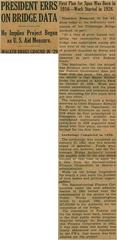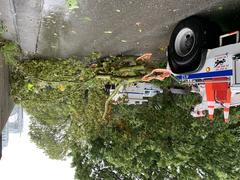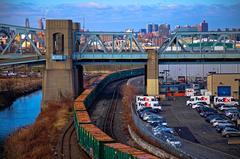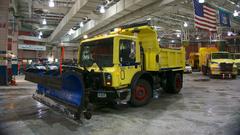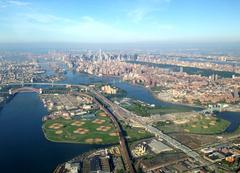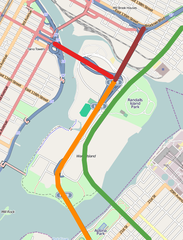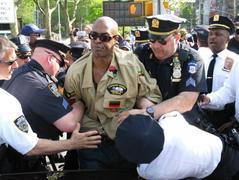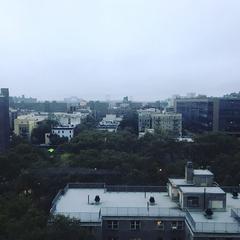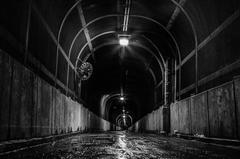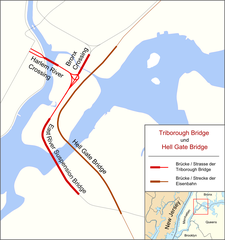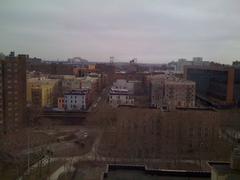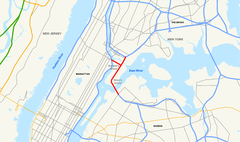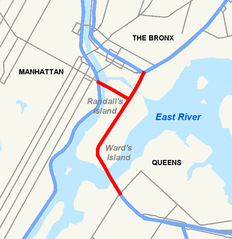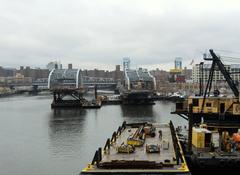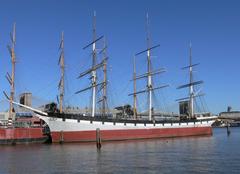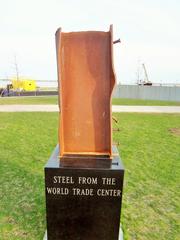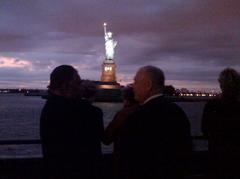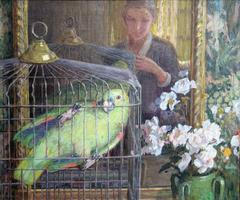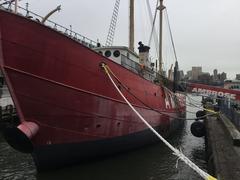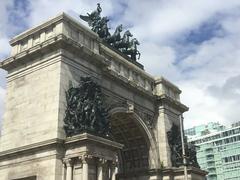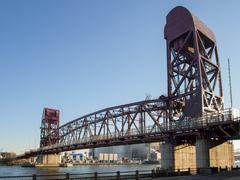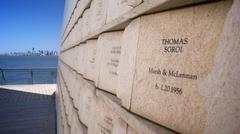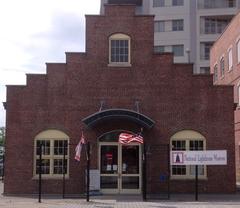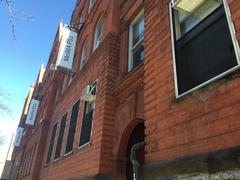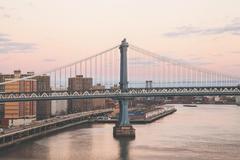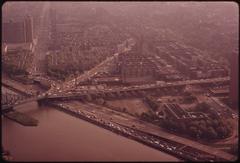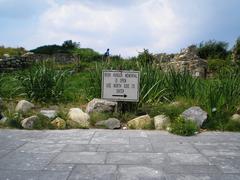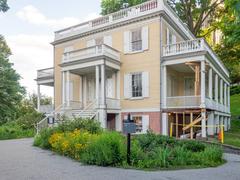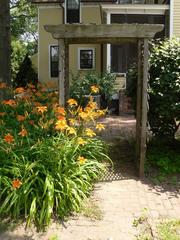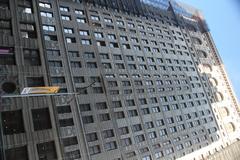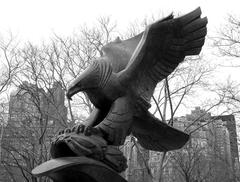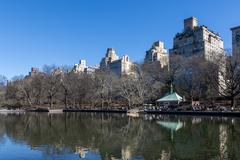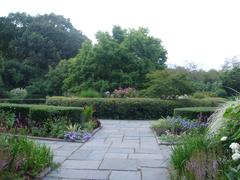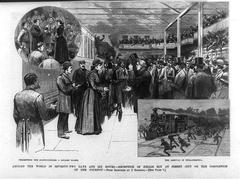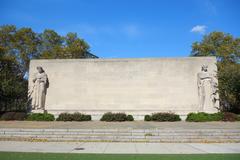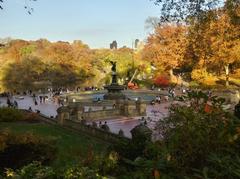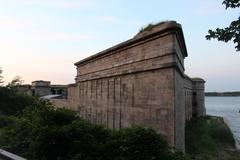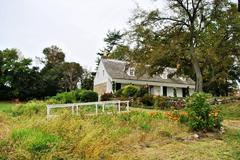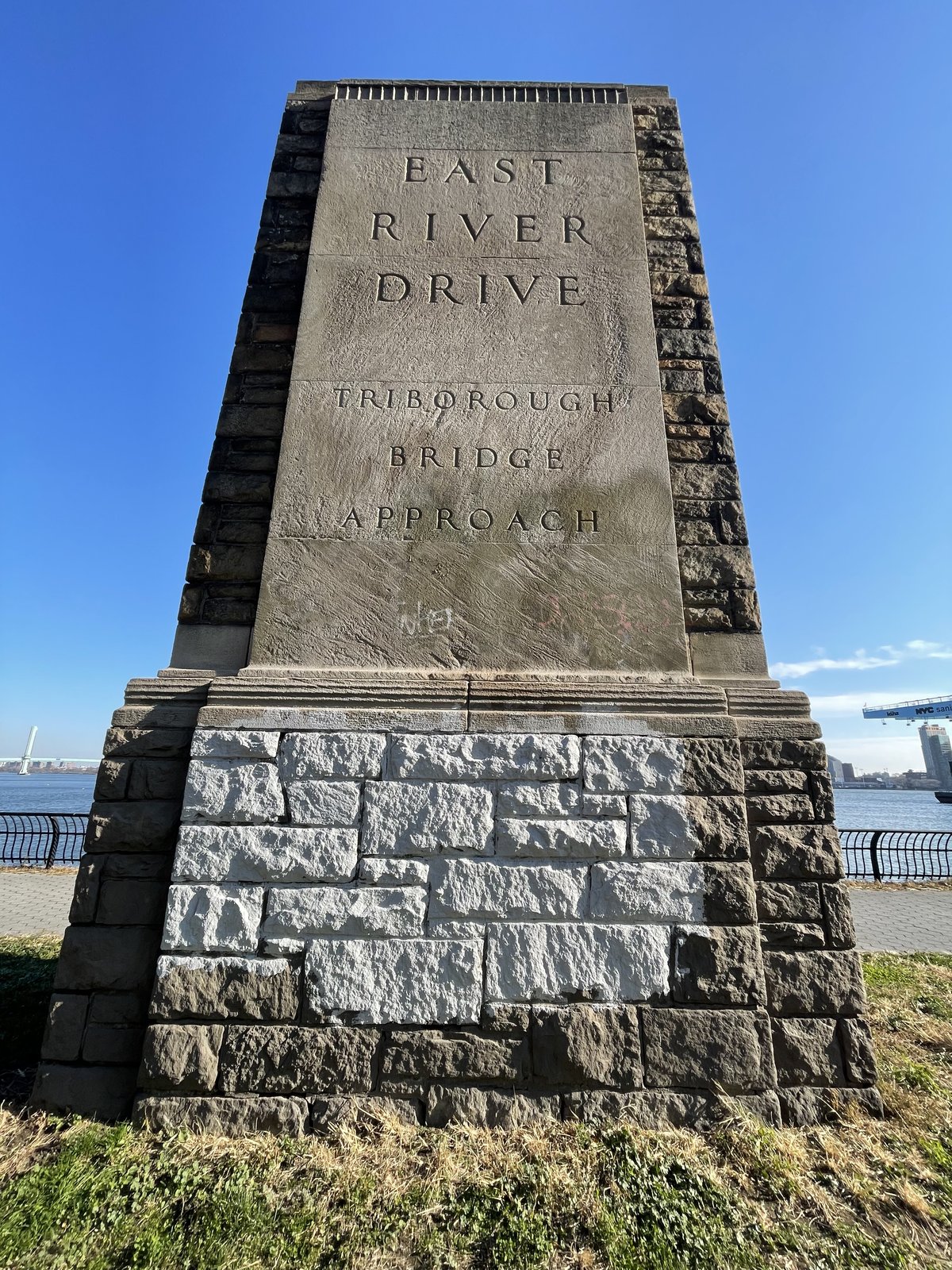
Visiting Hours, Tickets, and Historical Insights of Robert F. Kennedy Bridge in New York City
Date: 19/07/2024
Introduction
The Robert F. Kennedy Bridge, formerly known as the Triborough Bridge, is an iconic feat of engineering and a crucial component of New York City’s transportation network. Connecting the bustling boroughs of Manhattan, Queens, and the Bronx, this bridge facilitates the movement of over 200,000 vehicles daily and stands as a symbol of the city’s resilience and innovative spirit. Initially conceived in the early 20th century to address growing traffic congestion, the bridge’s construction was a monumental task ultimately realized under the leadership of Robert Moses and the design expertise of Othmar Ammann (MTA.info, NYC.gov). Opened in 1936 during the Great Depression, it provided much-needed jobs and boosted the local economy. Renamed in 2008 to honor Robert F. Kennedy, a prominent political figure and advocate for social justice, the bridge today serves not only as a transportation link but also as a historical and cultural landmark (NYC.gov). Visitors can explore its significance, enjoy stunning views from pedestrian pathways, and discover nearby attractions such as Randall’s Island and Astoria Park (RandallsIsland.org, NYCgovparks.org). This comprehensive guide provides an in-depth look at the bridge’s history, visitor information, and tips to enhance your experience.
Table of Contents
- [Introduction](#introductionintroduction)
- [History of the Robert F. Kennedy Bridge](#history-of-the-robert-f-kennedy-bridgehistory-of-the-robert-f-kennedy-bridge)
- [Early Conception and Planning](#early-conception-and-planningearly-conception-and-planning)
- [Construction and Design](#construction-and-designconstruction-and-design)
- [Opening and Early Years](#opening-and-early-yearsopening-and-early-years)
- [Renaming and Modernization](#renaming-and-modernizationrenaming-and-modernization)
- [Visitor Information](#visitor-informationvisitor-information)
- [Visiting Hours and Tickets](#visiting-hours-and-ticketsvisiting-hours-and-tickets)
- [Travel Tips](#travel-tipstravel-tips)
- [Nearby Attractions](#nearby-attractionsnearby-attractions)
- [Accessibility](#accessibilityaccessibility)
- [Historical Significance](#historical-significancehistorical-significance)
- [Cultural Impact](#cultural-impactcultural-impact)
- [Preservation and Future Prospects](#preservation-and-future-prospectspreservation-and-future-prospects)
- [FAQ](#faqfaq)
- [Conclusion](#conclusionconclusion)
- [References](#referencesreferences)
History of the Robert F. Kennedy Bridge
Early Conception and Planning
The Robert F. Kennedy Bridge, originally known as the Triborough Bridge, was conceived in the early 20th century as a solution to New York City’s growing traffic congestion. The idea was first proposed in the 1920s during a period of rapid urban expansion and increasing automobile use. The initial planning stages were led by the Regional Plan Association, which recognized the need for a comprehensive transportation network to connect Manhattan, Queens, and the Bronx.
Construction and Design
The construction of the bridge was a monumental engineering feat, involving the coordination of multiple agencies and overcoming significant logistical challenges. Authorized by the New York State Legislature in 1929, the project was delayed by the Great Depression. Momentum picked up with the establishment of the Triborough Bridge and Tunnel Authority (TBTA) in 1933 under Robert Moses. Designed by renowned engineer Othmar Ammann, the bridge features three major spans: the Harlem River span, the Bronx Kill span, and the East River span. The construction process required the relocation of thousands of residents and the demolition of numerous buildings, underscoring the project’s scale and impact.
Opening and Early Years
The Triborough Bridge officially opened on July 11, 1936, in a grand ceremony attended by President Franklin D. Roosevelt. Its opening marked a significant milestone in New York City’s infrastructure development, providing a critical link between three boroughs and facilitating the movement of people and goods across the region. Initially handling an average of 30,000 vehicles per day, the bridge’s toll revenues were used by the TBTA to fund other infrastructure projects, further enhancing the city’s transportation network.
Renaming and Modernization
In 2008, the Triborough Bridge was renamed the Robert F. Kennedy Bridge in honor of the late U.S. Senator and Attorney General, Robert F. Kennedy. The renaming ceremony was attended by members of the Kennedy family. Recent modernization efforts have included new lighting systems, the replacement of aging infrastructure, and the implementation of advanced traffic management technologies. These projects, coordinated by the Metropolitan Transportation Authority (MTA), have been carried out with minimal disruption to traffic.
Visitor Information
Visiting Hours and Tickets
The Robert F. Kennedy Bridge is open to vehicular traffic 24/7. Pedestrians and cyclists can access designated pathways. While there are no specific visiting hours for pedestrians or cyclists, visiting during daylight hours is advisable for safety reasons. No tickets are required for crossing the bridge, but tolls are applicable for vehicles. For the latest toll rates and electronic payment options, visit the MTA’s official page on the RFK Bridge.
Travel Tips
- Best Time to Visit: To avoid heavy traffic, visit during off-peak hours, typically late mornings or early afternoons on weekdays.
- Safety: Always use designated pedestrian and cyclist pathways. Be mindful of traffic and weather conditions.
- Photography: The bridge offers stunning views of the New York City skyline, especially at sunrise and sunset. Ensure you are in a safe area when taking photos.
Nearby Attractions
The Robert F. Kennedy Bridge is conveniently located near several popular New York City attractions:
- Randall’s Island Park: Situated in the East River, this park offers sports fields, gardens, and waterfront views (RandallsIsland.org).
- Astoria Park: Located in Queens, Astoria Park features a large pool, tennis courts, and scenic walking paths along the East River (NYCgovparks.org).
- Harlem: A historic neighborhood in Manhattan known for its vibrant culture, music venues, and dining options.
Accessibility
The Robert F. Kennedy Bridge is accessible to all visitors. It includes pathways for pedestrians and cyclists, and the MTA provides accessibility features for individuals with disabilities. For more detailed information, visit the MTA’s accessibility page.
Historical Significance
The Robert F. Kennedy Bridge holds a unique place in New York City’s history, serving not only as a critical transportation link but also as a symbol of the city’s resilience and ingenuity. Constructed during the Great Depression, the bridge played a crucial role during World War II in transporting military personnel and supplies. Its enduring legacy as a tribute to Robert F. Kennedy adds to its historical significance.
Cultural Impact
The bridge has made a lasting impact on New York City’s cultural fabric. Featured in numerous films, TV shows, and literature, it often symbolizes the city’s dynamic nature. Its renaming in honor of Robert F. Kennedy further cemented its place in the city’s cultural and historical narrative.
Preservation and Future Prospects
As the Robert F. Kennedy Bridge approaches its centennial, preservation efforts continue to ensure its historical and structural integrity. The MTA’s comprehensive maintenance program includes regular inspections, repairs, and upgrades. Future improvements will integrate sustainable technologies like energy-efficient lighting and environmentally friendly materials, reducing the bridge’s environmental impact while maintaining its historical significance.
FAQ
Q: What are the visiting hours for the Robert F. Kennedy Bridge? A: The bridge is open to vehicular traffic 24/7. Pedestrians and cyclists can access designated pathways during daylight hours for safety.
Q: Is there a fee to cross the Robert F. Kennedy Bridge? A: There are no tickets required, but tolls are applicable for vehicles. Check the MTA’s official page for the latest toll rates.
Q: Are there any special events or guided tours available on the bridge? A: Currently, there are no regular guided tours or special events on the bridge. However, the bridge’s pathways offer great views and are popular for walking and cycling.
Conclusion
The Robert F. Kennedy Bridge stands as a testament to New York City’s engineering prowess, historical resilience, and cultural richness. Its storied past and ongoing evolution reflect the dynamic nature of the city it serves. For more detailed information, visit the MTA’s official page on the RFK Bridge.

